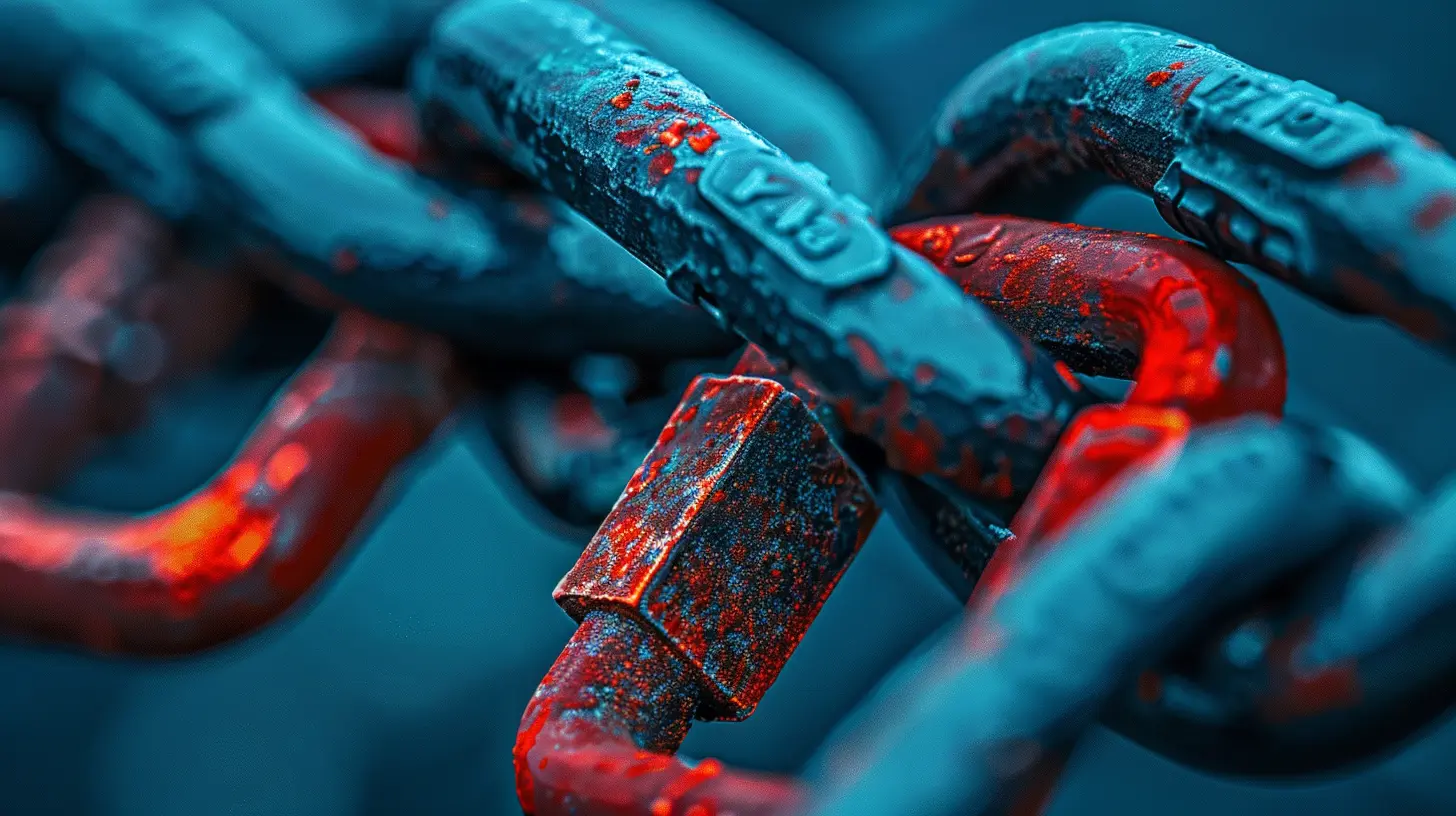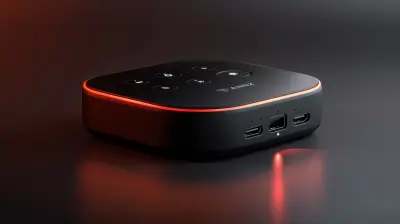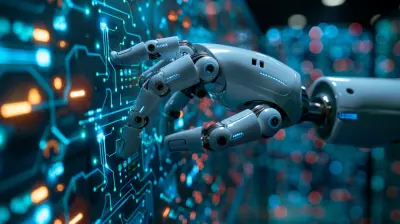How Hackers Use Fileless Malware to Evade Detection
4 April 2025
In the world of cybercrime, hackers are always trying to stay one step ahead of security systems. It’s like a constant game of cat and mouse, except in this case, the stakes are much higher. One of the latest tools in a hacker’s arsenal? Fileless malware.
What exactly is fileless malware? How does it differ from traditional malware, and why are hackers opting for it more frequently? Let’s dive into this sneaky tactic used by cybercriminals to evade detection and cause havoc in the digital world.

What is Fileless Malware?
First things first – let’s break down what fileless malware actually is. Traditional malware, the kind we’ve been hearing about for years, typically requires a file to be downloaded to a device. Whether it’s through a shady email attachment, a malicious link, or a sketchy download, there’s usually something that gets installed on your computer, and from there, the malware does its dirty work.But fileless malware? Well, it’s a bit sneakier. As the name suggests, fileless malware doesn’t rely on any files being downloaded or installed. Instead, it resides in the memory of a computer (often called RAM), meaning it can execute its malicious activities without leaving a trace on the hard drive. No files, no fingerprints. This makes it significantly harder for traditional antivirus software to detect it.
Imagine trying to catch a thief who doesn’t leave footprints. That’s essentially what cybersecurity teams are dealing with when it comes to fileless malware.

How Is Fileless Malware Different From Traditional Malware?
To understand why fileless malware is such a headache for security systems, let’s compare it to traditional malware.1. Persistence
Traditional malware often embeds itself into the operating system, creating files that remain on the hard drive even after a reboot. Fileless malware, on the other hand, typically doesn’t survive a system reboot. Once the machine is turned off, the malware is gone – but not before it’s done its damage.2. Detection
Most antivirus programs work by scanning files on a computer for known malicious signatures. Since fileless malware doesn’t rely on files, it can bypass many of these traditional detection methods. This type of malware uses existing legitimate tools and processes already present on the system, making it harder for security products to differentiate between normal activity and a malicious threat.3. Execution
Traditional malware often requires some form of human interaction – clicking on a malicious link, downloading a rogue file, or opening a scam email attachment. Fileless malware, on the other hand, can be executed through existing vulnerabilities in legitimate software already installed on the system. In many cases, the user wouldn’t even realize their machine has been compromised.
How Does Fileless Malware Work?
Now that we know what fileless malware is, let’s talk about how it works. The process can be complex, but we’ll break it down into simple steps:1. Initial Access
Hackers will first find a way to access the target system. This could be through phishing emails, malicious websites, or exploiting software vulnerabilities. Once they’ve gained access, they’ll inject malicious code into a legitimate process running on the machine.2. In-Memory Execution
Instead of writing malware to the hard drive, the malicious code is injected directly into the system’s memory (RAM). The malware often leverages existing tools already present on the machine, like PowerShell or Windows Management Instrumentation (WMI). These are tools designed for system administration, but hackers can manipulate them for malicious purposes.3. Payload Delivery
Once the malware is in the system’s memory, it can deliver its payload. This could involve stealing sensitive data, installing backdoors, or spying on the user’s activities. Since everything happens in memory, there’s no trace left on the hard drive, making it incredibly difficult to detect.4. Self-Destruction
One of the most frustrating aspects of fileless malware is its ability to disappear without a trace. Once the machine is rebooted, the malware is wiped from the system’s memory. However, by this point, the damage could already be done, whether it’s data theft, espionage, or system manipulation.
Why Do Hackers Use Fileless Malware?
Hackers are always looking for ways to improve their tactics, and fileless malware offers several advantages over traditional methods.1. Evasion of Detection
The primary reason hackers love fileless malware is its ability to evade detection. Traditional antivirus software is designed to scan files, but when there are no files to scan, it’s like trying to catch smoke with your bare hands. This makes fileless malware particularly effective against outdated or basic security systems that rely solely on signature-based detection.2. Use of Legitimate Tools
By using legitimate tools like PowerShell and WMI, hackers can carry out their attacks without raising any red flags. Since these tools are commonly used by system administrators, their presence doesn’t appear suspicious to many security systems. It’s like sneaking into a building wearing a janitor’s uniform – no one questions your presence because you look like you belong.3. Lower Risk of Detection During Spread
Fileless malware can spread without triggering alarms. Since it doesn’t involve downloading or installing new files, there’s no warning sign for users to spot. It’s like a ninja silently moving through the system, making it a preferred method for cyber espionage and targeted attacks.4. High Success Rate
Because fileless attacks are so difficult to detect, they have a high success rate. Once the malware is in the system, it can execute its tasks swiftly and efficiently. Hackers don’t need to worry about the malware being found or removed before they’ve achieved their goal.Real-World Examples of Fileless Malware Attacks
Let’s take a step back from the technical details and look at some real-world examples of fileless malware attacks. These incidents highlight just how dangerous this form of malware can be.1. Operation Cobalt Kitty
In 2017, a sophisticated cyber-espionage campaign known as "Cobalt Kitty" targeted a global company in the Asia-Pacific region. Hackers used fileless malware to infiltrate the company’s network and gather sensitive data. They leveraged tools like PowerShell and WMI to avoid detection, making it difficult for the company’s security team to identify the breach.2. Astaroth Malware
Astaroth is a well-known example of fileless malware that has been active since at least 2018. This malware targets Windows systems and uses legitimate tools like WMI and PowerShell to execute its malicious code. Astaroth is particularly dangerous because it avoids dropping any files on the system, relying entirely on system memory to carry out its attack.3. FIN7 Group
FIN7 is a notorious cybercrime group that has been using fileless malware in their attacks on financial institutions and retail businesses. They’ve been known to use fileless techniques to steal credit card information and other sensitive data. By avoiding traditional malware methods, they’ve managed to evade detection for extended periods, causing significant financial damage.
How to Protect Against Fileless Malware
Okay, so fileless malware sounds terrifying, right? But don’t panic just yet. While it’s certainly a difficult threat to deal with, there are steps you can take to protect yourself and your systems.1. Use Advanced Security Solutions
Traditional antivirus software may not be enough to protect against fileless malware. Look for advanced security solutions that offer behavior-based detection. These systems monitor the behavior of processes in real-time, looking for suspicious activities rather than relying solely on scanning files.2. Regularly Patch and Update Software
Many fileless attacks exploit vulnerabilities in outdated software. Make sure you’re regularly updating your operating system, applications, and security tools. Patching known vulnerabilities will make it harder for hackers to gain access to your system in the first place.3. Limit Use of PowerShell and WMI
Since PowerShell and WMI are commonly used in fileless attacks, consider limiting their use on your systems. If your organization doesn’t need these tools, disable them. If you do need them, make sure they’re properly secured and monitored for unusual activity.4. Implement Multi-Layered Security
A single security solution is not enough to combat sophisticated threats like fileless malware. Implement a multi-layered approach that includes firewalls, intrusion detection systems, and endpoint protection. The more barriers you put in place, the harder it will be for hackers to penetrate your systems.5. Educate Employees on Phishing Attacks
Fileless malware often gains initial access through phishing emails. Educate employees on how to recognize phishing attempts and avoid clicking on suspicious links or downloading unknown attachments. A well-informed workforce is your first line of defense.The Future of Fileless Malware
As cybersecurity continues to evolve, so do the tactics of hackers. Fileless malware represents just one of the many ways cybercriminals are adapting to evade detection. In the future, we can expect these attacks to become even more sophisticated, making it even more crucial for individuals and organizations to stay vigilant.While fileless malware is undoubtedly a challenge, it's not unbeatable. With the right security measures in place and a proactive approach to cybersecurity, you can significantly reduce the risk of falling victim to these stealthy attacks.
all images in this post were generated using AI tools
Category:
Cyber ThreatsAuthor:

John Peterson
Discussion
rate this article
8 comments
Zarek Ward
This article effectively highlights the growing threat of fileless malware. It's alarming how these sophisticated techniques bypass traditional defenses. Awareness and updated security measures are essential for organizations to combat this evolving challenge. Great insights!
April 13, 2025 at 7:57 PM

John Peterson
Thank you for your thoughtful comment! I'm glad you found the insights helpful. Raising awareness and enhancing security measures are indeed crucial in tackling the challenges posed by fileless malware.
Bailey Holland
Great insights! Fileless malware is a game-changer in cybersecurity. Thanks for sharing!
April 13, 2025 at 4:07 AM

John Peterson
Thank you! I'm glad you found the insights valuable. Fileless malware is indeed a pressing challenge in cybersecurity.
Lindsey McIntyre
This article effectively highlights the evolving threat of fileless malware, showcasing how hackers exploit legitimate system tools to evade detection. Awareness and proactive security measures are crucial for organizations to combat this sophisticated attack vector.
April 12, 2025 at 4:16 AM

John Peterson
Thank you for your insightful comment! You're right—raising awareness and implementing proactive security measures are essential in the fight against fileless malware.
Rosalind Smith
Understanding fileless malware is crucial in today's digital landscape. By staying informed and proactive, we can bolster our defenses and turn the tide against cyber threats. Let’s embrace knowledge and technology to protect our digital world together!
April 11, 2025 at 6:19 PM

John Peterson
Absolutely! Staying informed about fileless malware is vital for strengthening our cybersecurity defenses. Together, we can enhance our awareness and resilience against these evolving threats.
Kade Sanchez
Great, more techy magic!
April 9, 2025 at 4:21 AM

John Peterson
Thank you! It's fascinating how cyber threats are constantly evolving.
Tristan Acevedo
This article succinctly explains the stealthy nature of fileless malware, highlighting its ability to exploit legitimate system processes and evade traditional security measures effectively.
April 7, 2025 at 10:35 AM

John Peterson
Thank you for your feedback! I'm glad you found the article informative on the stealthy tactics of fileless malware.
Calaris Smith
Fileless malware: the stealthy ninja of cyber threats, hiding in plain sight—watch your files!
April 7, 2025 at 5:00 AM

John Peterson
Thank you for the insightful comment! Indeed, fileless malware's ability to operate without traditional files makes it a significant threat in cybersecurity. Staying vigilant is crucial!
Arianth Wilkins
This article provides a clear overview of fileless malware and its tactics for evading detection. The insights into how hackers leverage legitimate processes to execute attacks are particularly eye-opening. It emphasizes the need for robust security measures to combat these evolving threats.
April 5, 2025 at 8:38 PM

John Peterson
Thank you for your feedback! I'm glad you found the insights on fileless malware and its tactics informative. It's crucial to stay vigilant against these evolving threats.
MORE POSTS

Soundproofing Your Home Theater: Tips for a Better Audio Experience

The Best Streaming Devices for Cord Cutters: A Full Review

Upgrading Your Blu-ray Collection: Why Physical Discs Still Matter

How IoT Networks Are Shaping the Future of Smart Cities

The Ethical Implications of Robotic Process Automation in the Workplace

The Impact of Battery Technology on Off-Grid Living